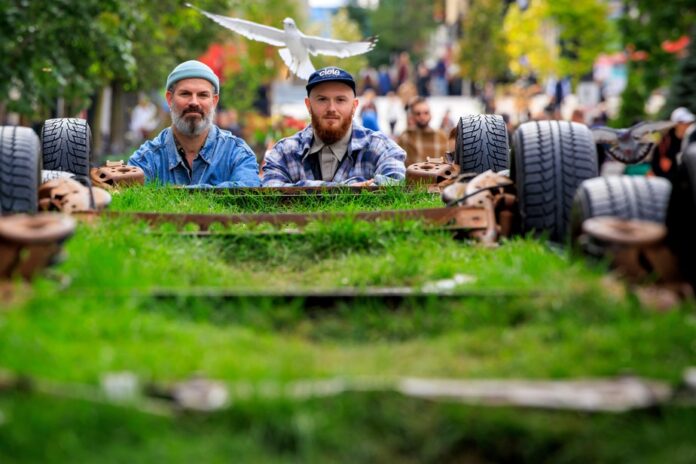There is something of Billy Elliot in the story of Alexandre Morin. In fact, the two boys discovered dance at age 11 in rural areas. Billy, in a mining village in the north-east of England. Alexandre, in a family of mechanics from the Basses-Laurentides. The Quebecer will bring his two worlds together in The Anatomy of a Motor, at the Agora de la danse, from October 25 to 28.
In this work combining dance, cinema, music and dramaturgy, created in close collaboration with Mathieu Leroux and Jonathan Goulet, Morin delves into his past. “I grew up in the woods,” he said. We moved around ten times, but no matter the house, there was always a garage and our land became a scrapyard. I wanted to dig into what I had left of that environment. »
An environment that he rejected for a long time. “I had little interest in manual labor and hypermasculinity. In addition, as a teenager, it was difficult for me at school. I was a closeted gay and couldn’t wait to move out. »
Luckily, he had dancing to brighten his days. “When I knew I wanted a career in this, I exported myself to Montreal and I was able to flourish artistically and in terms of my identity. »
To do this, however, he put aside a part of himself. “I hid my rural side a lot when I arrived in the city and in the gay community. I had a French accent and I spoke crookedly. I wanted to clean it all up. »
After a decade of evolving in his artistic discipline, maturity and hindsight have nuanced his perspective on the absence of his father and his discomfort in the rural environment. “Now that I have emancipated myself humanly, artistically and sexually, I am exploring how I feel returning to this place as an adult. It feels good to reconnect. I have never been closer to my brother. »
If the creation was supposed to deal mainly with the absence of the patriarch, the process drifted, placing siblings at the heart of the project.
A brother who accompanies their mother and sister to all of Alexandre’s shows. “After the shows, they wait for me in the lobby to congratulate me. I have the impression that they don’t always have the words to dissect their experience as spectators, but they are there. »
Present and very attentive. “One day my brother told me that as a teenager, when I was at leisure school, the dancers always did the same movements at the same time on stage. But, now, in my shows, he felt that I had found my own way of moving. It touched me to hear that. »
Morin in turn became interested in the world of his brother and their father, a few years after his father told him that as long as he didn’t have dirty hands like his, he wouldn’t really have worked. “I wanted to reclaim manual work in my own way and demonstrate that my profession as a dancer is also very demanding. »
To do this, he observed his brother’s work and his strategies to avoid getting injured. “I was fascinated to discover the choreography of his body interacting with the vehicle. In the show, we offer an artist-artisan dialogue, bringing out the sensitive and artistic side of his work. »
The dancer does not hide his desire to give the public keys to understanding.
With his collaborators, he chose autobiographical fragments which drift towards fiction. “We tell snippets of my life giving them theatrical treatment. The video portion will also veer into fiction, becoming a gay western bar where you can emancipate yourself. »
Does he fear the reactions of those close to him? “I give them their space to receive the show. We know that we were kind in our choices. I address the absence of the father on the body and identity, but it has become more a story of reconnection with my brother and my roots, by fully assuming them on stage. »















